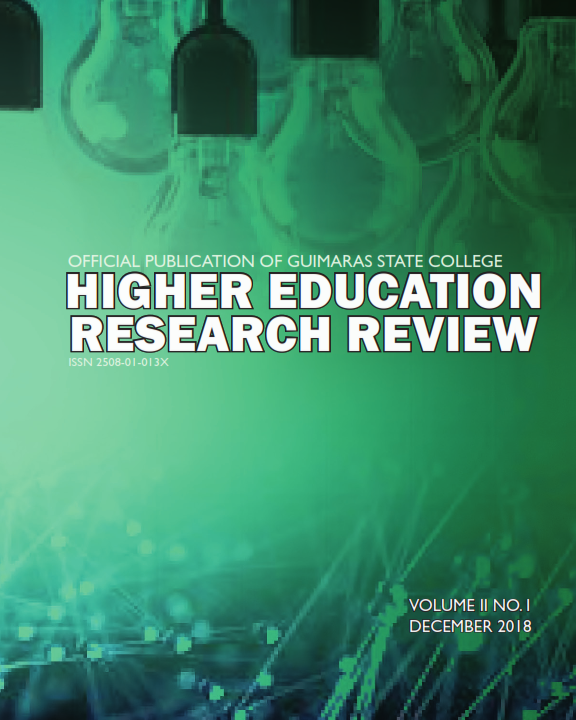Multiple Intelligences of the Education Students
Keywords:
Multiple intelligences, education, guimaras state college, philippinesAbstract
Multiple Intelligences (MIs) provides a dimension that every human being differs from one another. This study was conducted to determine the MIs of 167 College of Teacher Education students during the first semester, Academic Year 2013–2014 at Guimaras State College – Mosqueda Campus, Jordan, Guimaras using correlation research design. The instrument used was eight dimensions in the Multiple Intelligences Profiling Questionnaire (MIPQ) of Gardner, adapted from Bermman (1998), McKenzie (1999), and Armstrong (2009). Each type of intelligence consisted of ten statements where students were asked to answer every item of the questionnaire concerning what they feel in their lives.
The researchers administered the questionnaire to the respondents using a researcher-made questionnaire. The panel of experts determined the validity of the questionnaire using the eight-point criteria for content validity by Good and Scates and Lawsche’s Content Validity Ratio. Cronbach alpha was used to determine the reliability of the questionnaire. The statistical tools used were frequency count, percentage, mean, t-test, and Analysis of Variance (ANOVA).
Results revealed that the majority of the respondents were females, aging between 16–25 years old. The respondents showed a strong inclination towards Verbal-Linguistic, Musical, Interpersonal, and Intrapersonal intelligences.
Moreover, among the College of Teacher Education students, Verbal-Linguistic was the dominant intelligence. However, education students showed lowest MIs on Logical-Mathematical, Naturalistic, Visual-Spatial, and Bodily-Kinesthetic. Results further showed that Verbal-Linguistic, Musical, Interpersonal, Bodily-Kinesthetic, and Logical-Mathematical intelligences have a significant relationship in the academic performance of the respondents. It means that the respondents were actively high in some aspects of intelligences but not in others.


